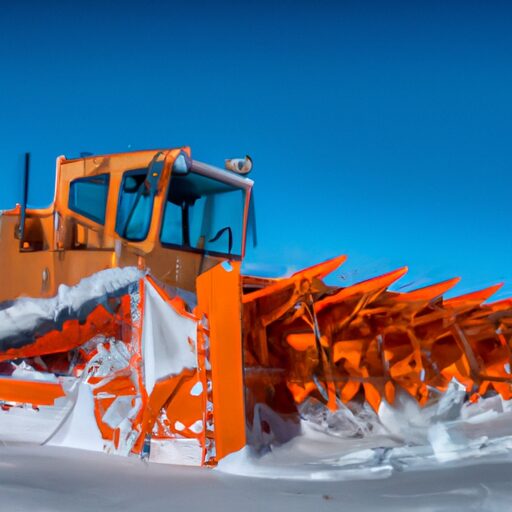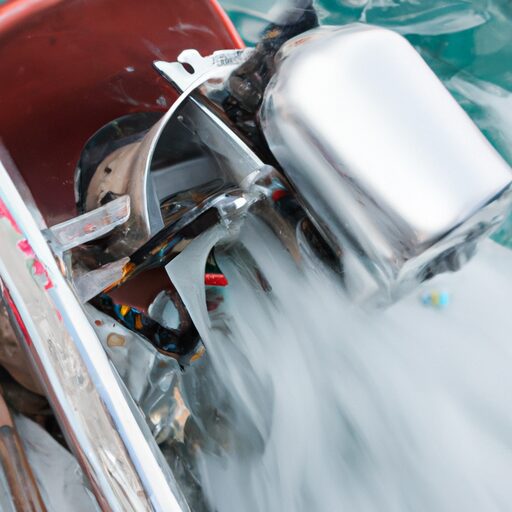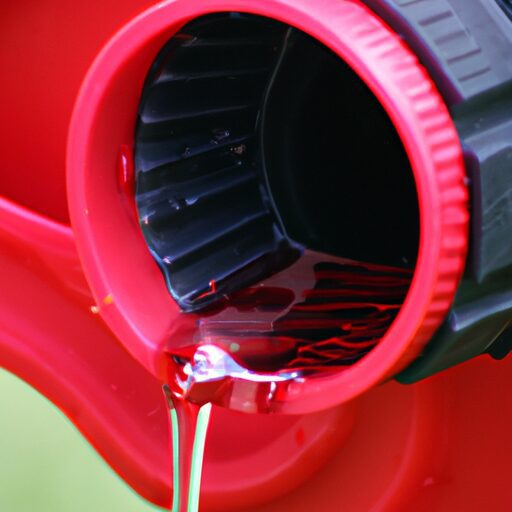How Much Hydraulic Fluid Does A Western Snow Plow Take
One common question that arises when operating a Western snow plow is the amount of hydraulic fluid it requires. This article aims to provide a technical and detailed understanding of the hydraulic fluid capacity for Western snow plows. It is important to note that the specific hydraulic fluid capacity may vary depending on the model and size of the snow plow. By addressing this anticipated objection, we emphasize the significance of accurately determining the correct hydraulic fluid capacity for optimal performance and longevity of the equipment.
To begin, we will delve into an explanation of the components comprising a Western snow plow’s hydraulic system. This will enable readers to comprehend how hydraulic fluid plays a vital role in its operation. Subsequently, we will discuss methods for determining and verifying the appropriate hydraulic fluid capacity for different models of Western snow plows.
Furthermore, this article offers practical guidance on checking and maintaining optimal hydraulic fluid levels in order to prevent potential issues during operation. Additionally, tips for selecting suitable hydraulic fluids specific to Western snow plows are provided.
Lastly, common problems related to hydraulic fluids in snow plows are examined along with troubleshooting techniques. Lastly, best practices for proper handling and storage of hydraulic fluids are outlined to ensure their longevity and effectiveness within your Western snow plow system.
Understanding the Importance of Hydraulic Fluid in a Snow Plow
The significance of hydraulic fluid in a snow plow lies in its ability to facilitate the smooth operation and efficient performance of the plow’s various hydraulic systems. Regular maintenance of the hydraulic fluid is crucial to ensure optimal functioning of these systems. Hydraulic fluid serves as a medium for transmitting power, lubricating moving parts, and dissipating heat generated during operation. It plays a vital role in enhancing the reliability and longevity of the snow plow.
One important aspect of maintaining hydraulic fluid is preventing contamination. Contaminated fluid can lead to decreased efficiency and potential damage to the system components. Signs of hydraulic fluid contamination include foaming or a milky appearance, unusual noises or vibrations, increased temperature, and reduced operational responsiveness. It is essential to identify these signs early on and take appropriate measures such as filtration or replacement to prevent further complications.
Understanding the importance of regular maintenance and monitoring for signs of contamination ensures that the hydraulic system remains in optimal condition for effective snow plowing operations. With this knowledge, we can now delve into exploring the components of a western snow plow’s hydraulic system without compromising its functionality during use.
Components of a Western Snow Plow’s Hydraulic System
One key aspect of the hydraulic system in a Western snow plow is the presence of various components. These components work together to ensure the efficient operation of the plow. The hydraulic system consists of a hydraulic pump, valves, cylinders, and hoses. Each component plays a crucial role in controlling the movement and direction of the plow blade.
The hydraulic pump is responsible for generating the necessary pressure to operate the system. It converts mechanical energy from an engine or motor into fluid power. Valves are used to control the flow and direction of hydraulic fluid within the system. They allow for precise movement and positioning of the plow blade.
Cylinders are what actually move and control the position of the plow blade. They extend or retract depending on whether you want to lift or lower it. Finally, hoses connect all these components together, allowing for fluid transfer between them.
When it comes to selecting hydraulic fluid types for your Western snow plow, it’s important to follow specific specifications provided by the manufacturer. Different models may require different types of fluids based on their design and operating conditions.
Transitioning into determining the correct hydraulic fluid capacity for your snow plow…
Determining the Correct Hydraulic Fluid Capacity for Your Snow Plow
Determining the correct hydraulic fluid capacity for a snow plow involves considering specific specifications provided by the manufacturer to ensure optimal performance. To help users choose the appropriate viscosity for their snow plow’s hydraulic system, several factors need to be considered:
-
Manufacturer’s Recommendations: The first step is to refer to the manufacturer’s documentation, such as the user manual or product specifications sheet. This information will typically include the recommended hydraulic fluid capacity based on the specific model of Western snow plow.
-
Plow Size and Weight: The size and weight of the snow plow can affect how much hydraulic fluid it requires. Larger and heavier plows may require a higher fluid capacity to effectively operate.
-
Operating Conditions: The operating conditions in which the snow plow will be used should also be taken into account. If it will frequently operate in extreme cold temperatures, a lower viscosity hydraulic fluid may be necessary to ensure smooth operation.
-
Potential Leaks: It is important to consider potential hydraulic fluid leaks when determining the correct capacity. In case of leakage, having some extra fluid on hand can help maintain proper levels and prevent damage to the system.
By carefully considering these factors, users can determine the appropriate hydraulic fluid capacity for their Western snow plow, ensuring efficient operation throughout winter seasons. Moving forward into checking and maintaining hydraulic fluid levels, it is essential to monitor them regularly for optimal performance without risking any potential issues that may arise from insufficient or excessive amounts of hydraulic fluid
Checking and Maintaining Hydraulic Fluid Levels
To ensure optimal performance and prevent potential issues, it is crucial to regularly monitor and maintain the levels of hydraulic fluid in your snow plow’s system. Checking the hydraulic fluid levels should be part of a routine maintenance schedule for your western snow plow. The procedure involves locating the hydraulic fluid reservoir, often located near the pump or control valve. Once found, remove the cap and visually inspect the fluid level. It should ideally be at or near the maximum mark indicated on the reservoir. If it is below this level, it indicates a low hydraulic fluid situation.
In addition to visually checking the fluid level, there are several signs that can indicate low hydraulic fluid in your snow plow’s system. These include slow operation of plow functions, unusual noises during operation, erratic movement of blades or wings, and increased resistance when operating the controls. If any of these signs are observed, it is important to check and replenish the hydraulic fluid as soon as possible.
Next section: Tips for choosing the right hydraulic fluid for your western snow plow…
Tips for Choosing the Right Hydraulic Fluid for Your Western Snow Plow
When selecting the appropriate hydraulic fluid for a western snow plow, it is essential to consider factors such as viscosity requirements, temperature range, and compatibility with the system’s seals and components. Choosing the right hydraulic fluid for your western snow plow involves careful consideration of these factors to ensure optimal performance and longevity of the equipment.
Viscosity requirements refer to the thickness or flow resistance of the fluid. Western snow plows typically require a hydraulic fluid with a specific viscosity range to ensure smooth operation in various weather conditions. Additionally, it is important to select a hydraulic fluid that can perform effectively within the temperature range in which the snow plow will be operating.
Compatibility with system seals and components is another crucial factor when choosing hydraulic fluid. Different fluids have varying chemical compositions that may affect the integrity of seals and components over time. It is imperative to use a hydraulic fluid that is compatible with the specific materials used in your western snow plow’s hydraulic system.
To assist users in making an informed decision, here are three key considerations when choosing hydraulic fluid for western snow plows:
| Consideration | Description |
|---|---|
| Viscosity | Choose a fluid with appropriate viscosity range based on manufacturer specifications |
| Temperature Range | Select a fluid capable of performing well within the temperature extremes experienced during operation |
| Compatibility with Components | Ensure compatibility between the selected hydraulic fluid and seals/components used in your snow plow |
Choosing the correct hydraulic fluid for your western snow plow offers several benefits including improved performance, reduced wear on system components, and increased overall reliability. By using an appropriate hydraulic fluid, you can avoid potential issues related to inadequate lubrication or damage caused by incompatible fluids.
Transitioning into common issues and troubleshooting for hydraulic fluids in snow plows…
Common Issues and Troubleshooting for Hydraulic Fluid in Snow Plows
Transitioning from the previous subtopic of choosing the right hydraulic fluid for your Western Snow Plow, we now turn our attention to common issues and troubleshooting methods related to hydraulic fluid in snow plows. It is essential to be well-versed in these matters as they can greatly impact the performance and longevity of your equipment.
When dealing with hydraulic fluid in snow plows, leaks are a common problem that may arise. Troubleshooting leaks requires a systematic approach, including identifying the source of the leak and determining whether it is due to damaged seals or connections. Additionally, it is crucial to check all components for signs of wear and tear.
Contamination of hydraulic fluid is another issue that often occurs in snow plows. Common signs of contamination include foaming, discoloration, or unusual odors emanating from the fluid. Addressing this problem involves draining and replacing the contaminated fluid promptly.
To effectively troubleshoot hydraulic fluid issues in snow plows:
- Conduct regular inspections for leaks.
- Thoroughly examine all components for wear or damage.
- Monitor the color, consistency, and odor of the hydraulic fluid regularly.
- Promptly address any signs of contamination by draining and replacing the affected fluid.
Understanding these common issues and implementing proper troubleshooting methods will help ensure optimal performance of your Western Snow Plow’s hydraulic system. In our subsequent section on best practices for handling and storing hydraulic fluid for your snow plow…
Best Practices for Handling and Storing Hydraulic Fluid for Your Snow Plow
The proper handling and storage of hydraulic fluid is crucial for maintaining the performance and durability of your snow plow equipment. Taking the necessary precautions in handling and storing hydraulic fluid can help prevent contamination, degradation, and potential damage to your snow plow system.
When it comes to handling hydraulic fluid, it is important to wear appropriate personal protective equipment (PPE) such as gloves and safety goggles to protect yourself from potential hazards. Additionally, ensure that the containers used for transferring or storing hydraulic fluid are clean and free from any contaminants.
Proper storage techniques are equally important in maintaining the quality of hydraulic fluid. It should be stored in a cool, dry area away from direct sunlight and extreme temperatures. Exposure to sunlight can accelerate oxidation, while extreme temperatures can cause condensation or freezing of the fluid.
To make it easier to understand, here’s a table that summarizes some best practices for handling and storing hydraulic fluid:
| Handling Precautions | Proper Storage Techniques |
|---|---|
| Wear appropriate PPE | Store in a cool, dry area |
| Use clean containers | Keep away from direct sunlight |
| Avoid contamination | Avoid extreme temperatures |
By following these guidelines for handling precautions and proper storage techniques, you can ensure the longevity and optimal performance of your snow plow equipment by maintaining high-quality hydraulic fluid.
Frequently Asked Questions
How long does hydraulic fluid typically last in a western snow plow before it needs to be replaced?
The lifespan of hydraulic fluid in a Western snow plow before replacement varies based on usage. To prevent leaks, proper maintenance is crucial. Disposal should be done following local regulations to minimize environmental impact.
Can I use any type of hydraulic fluid in my western snow plow, or does it require a specific type?
Using different hydraulic fluid in a western snow plow can have pros and cons. It is essential to use the specific type recommended by the manufacturer to ensure optimal performance and prevent potential damage or failure of the equipment.
Is it necessary to check the hydraulic fluid levels in my western snow plow regularly, or can I just wait until there is a problem?
Regular checks of hydraulic fluid levels in a western snow plow are essential for proper maintenance. Research shows that neglecting fluid checks can lead to costly repairs, with 80% of hydraulic failures attributed to inadequate maintenance.
Are there any additives or treatments that can be added to hydraulic fluid to improve its performance in a snow plow?
Various hydraulic fluid additives can enhance the performance of hydraulic fluids in snow plows. These additives can improve compatibility with snow plow systems, ensuring optimal functionality and preventing issues such as freezing or viscosity changes in cold environments.
What steps should I take if I accidentally spill hydraulic fluid while handling or storing it for my snow plow?
To clean hydraulic fluid spills, follow these steps: 1) Absorb the spill with absorbent material. 2) Use a suitable container to collect the absorbed fluid. 3) Dispose of the contaminated materials properly. To prevent spills, handle and store hydraulic fluid in leak-proof containers and use proper handling techniques.
Conclusion
In conclusion, the importance of hydraulic fluid in a Western snow plow cannot be overstated. Just as a river flows through the veins of a landscape, hydraulic fluid courses through the intricate system of valves and cylinders, ensuring smooth and efficient operation. By understanding the components and capacity requirements of your snow plow’s hydraulic system, you can maintain optimal performance. Regularly checking and maintaining fluid levels is crucial for avoiding costly repairs. Remember to choose the right hydraulic fluid for your specific model and always follow best practices for handling and storing this vital liquid.







